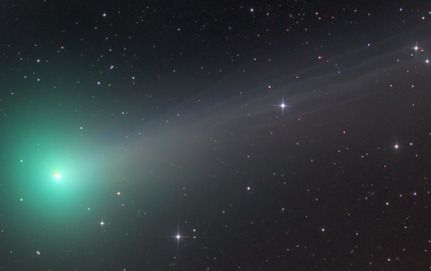
Despite the recent outbursts, which could have been caused by a break up of ISON's nucleus, astronomers with NASA's Comet ISON Observing Campaign believe that the comet is still intact.
It will need to be to survive next week's hellish plunge through the sun's atmosphere. If it does survive--a big IF--it could emerge as a splendid naked-eye object for sky watchers in the northern hemisphere.
Observationally speaking, the next big event in the timeline of Comet ISON's journey comes on Nov. 21st when the comet enters the field of view of NASA's STEREO-A spacecraft. The Heliospheric Imager on STEREO-A will pick up the comet just as Earth-bound telescopes begin to lose it. In the days that follow, STEREO-B, SOHO and the Solar Dynamics Observatory will join the hunt, providing continuous views of Comet ISON all the way to perihelion. Stay tuned! www.spaceweather.com
 RSS Feed
RSS Feed